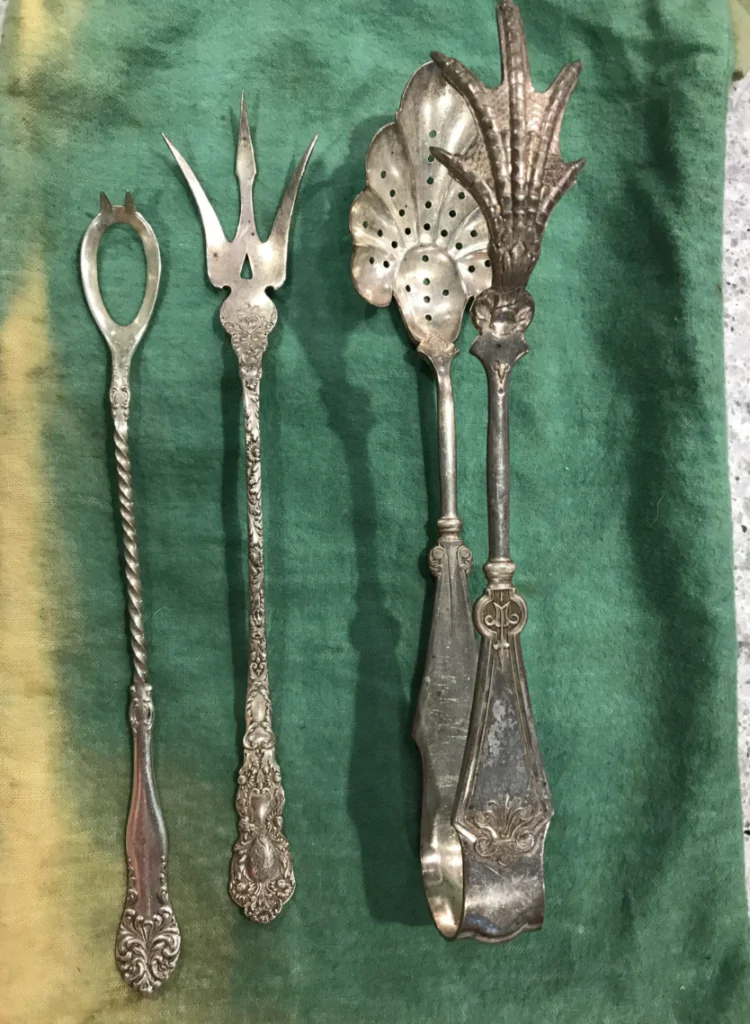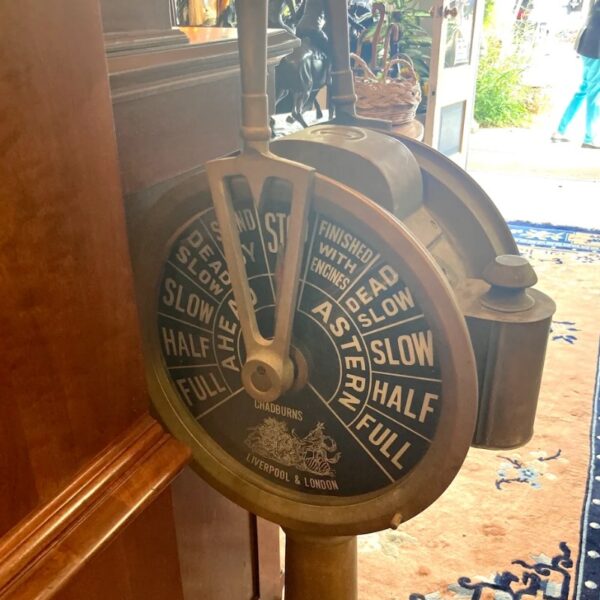The allure of antique silverware extends far beyond its gleaming surfaces and intricate designs. Each piece tells a story, a testament to the culinary customs and dining etiquette of bygone eras.
Recently, a collection of peculiar silver items stirred the curiosity of an online community on Reddit. This ensemble included an open spoon with spikes, a trident-like fork, tongs with a singular chicken foot, and a perforated spoon.
Their unusual designs baffled many, leading to a fascinating journey of discovery that would eventually unveil their true identities: an olive server, a lettuce server, ice tongs, and, surprisingly, the trident-like implement identified as a lemon fork.

The open spoon with spikes, initially puzzling to many, was revealed to be an olive server. Its design, featuring spikes, is ingeniously tailored for securing olives, allowing the brine to drain away through the openings. This specificity in design highlights the meticulous attention to detail characteristic of antique silverware, where functionality was crafted with elegance in mind.
Next, the trident-like fork, with its slender and pointed prongs, puzzled observers with its purpose. It turned out to be a lemon fork, a utensil designed for securely picking up and serving slices of lemon, a common accompaniment to fish and seafood dishes. The lemon fork’s design, while seemingly elaborate, served a practical purpose in an era where the art of dining included the use of specific utensils for different types of food.
The tongs with a chicken foot, perhaps the most curious of the collection, are actually ice tongs. The inclusion of a talon is a novelty feature, adding a whimsical touch to a utilitarian object. This design not only facilitated the gripping of ice cubes but also reflected the Victorian era’s fondness for incorporating elements of nature and whimsy into household items.
Lastly, the perforated spoon, with its unique construction, is a lettuce server. The perforations allowed any excess water to drain from the lettuce leaves, ensuring that salads were served at their crisp best. Like the olive server, the lettuce server exemplifies the specialized dining utensils that were developed to enhance the presentation and enjoyment of food.
The discovery of the true purposes of these items underscores the rich diversity and specialization of antique silverware. In the past, dining was not just a necessity but an elaborate ritual, with utensils for almost every conceivable type of food. This specialization reflects a time when formal dining was a more prevalent aspect of social life, and the tools used were as much a part of the dining experience as the food itself.
Moreover, the identification process highlights the invaluable role of community knowledge and digital platforms in solving historical mysteries. The collective effort of the Reddit community in uncovering the functions of these items demonstrates how online spaces have become digital salons for historical inquiry and shared learning.
In conclusion, the peculiar collection of antique silverware – an olive server, a lemon fork, novelty ice tongs, and a lettuce server – provides a fascinating glimpse into the dining customs of the past.
These items, once mysteries, now serve as tangible connections to the intricacies of historical dining etiquette, showcasing the evolution of culinary practices and the artistry embedded in everyday objects. As we continue to uncover and understand the purpose behind such artifacts, we are reminded of the depth and richness of our collective history, preserved in the form of these elegant and functional treasures.

